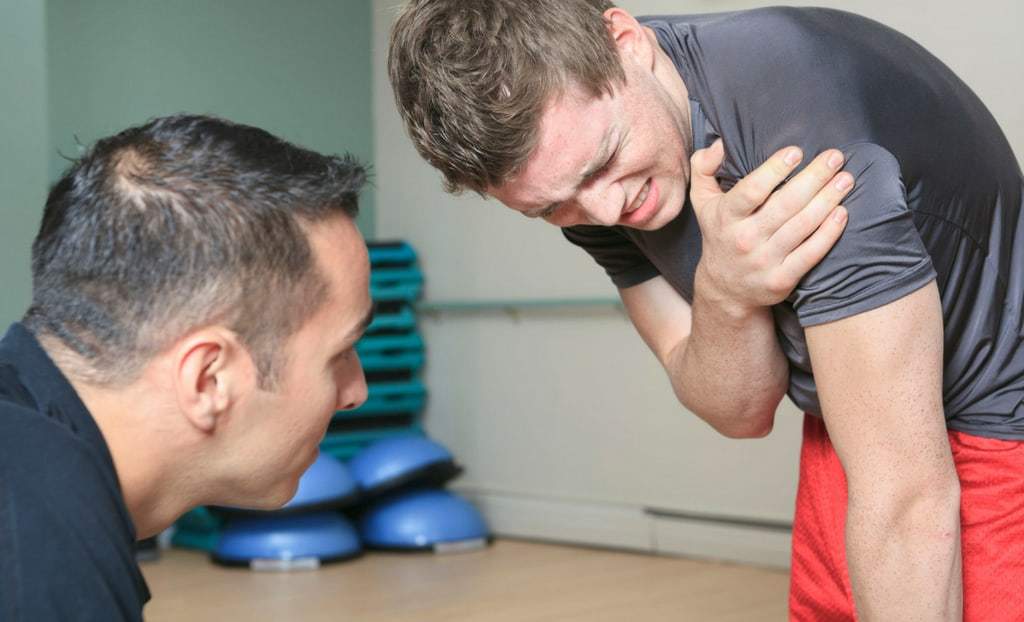More and more companies are now offering one very exciting perk for their employees. Instead of giving them a gym subscription, they’d rather bring the gym onsite, within the workplace.
While this is an amazing idea, as it allows employees to work out during breaks and relax a bit, it’s also something that can make employers liable in case of injury. That’s right: if an employee gets injured in an onsite gym, the workers’ compensation will most likely be in effect and have the employer bear the consequences.
As such, in the following lines, we’ll introduce you to the 10 most common gym injuries, and we’ll also teach you how to prevent them. The last thing you want is a medical leave and the last thing your boss wants is to suffer the consequences of bringing a gym into the workplace!
Table of Contents
Groin Pull
This type of injury usually occurs during sprinting, squatting, or lunging. To be more specific, it is the result of a sudden body movement that ends up pushing one of your muscles a bit too far. The main effect is a groin pull that will most likely have you cancel the next meeting, especially if you were supposed to present something.
However, this injury can be easily prevented if you properly warm up before your training session – especially the inner thigh muscles. Proper lower body warm-up will prevent most if not all possible groin pulls.
Elbow Pain – Lateral Epicondylitis
You wouldn’t expect elbow pain to be a common gym injury – but it is! People that don’t have much experience with gym equipment tend to lift weights that are too heavy for them. If they do this too often, elbow pain develops.
This type of pain implies tendon irritation, mainly caused by deep wrist flexions. One can avoid such pain – and still use a computer mouse after – by keeping their wrists in a neutral position when exercising. Naturally, if you have any pain whatsoever, you may also want to lift less weight.
Sprained Ankle
The most common injury that can happen in a gym is the infamous sprained ankle. In fact, one doesn’t even have to be working out to sprain their ankle. All it takes is a bad step!
The key to avoiding such an injury is to stay focused at all times while engaged in leg or feet exercise. After all, most of us already know that we step wrong when we’re not paying attention to what we’re doing or simply daydreaming.
Low Back Strain
Low back strain usually occurs when you put too much pressure on the muscles that surround the bottom of your spine. This type of injury is usually signaled by a sudden pulling sensation in your lower back.
It’s very important to identify this kind of pain as it can eventually develop nerve compression or, in serious cases, disk herniation.
The best way to prevent this type of injury is to maintain the spine in a neutral position when working out, especially when lifting.
Rotator Cuff Injury
Even if all you do is rope skipping while in the gym, keep in mind that it can cause you to get injured as well. This is because it implies overhead movements that put pressure on your shoulder and its mobility.
As such, the shoulder’s rotator cuff may get affected – if this happens, the joint of the shoulder will lose some of its stability and support until the cuff heals.
To avoid such an injury, one must implement more upper body strengthening exercises in their program, especially some that tackle the shoulders.
Iliotibial Band Syndrome (ITBS)
Treadmill users and cyclists may develop something known as ITBS. The latter is a series of ligaments found along the outer leg, that stretch from the knee and up to the hip. ITBS implies the tightening and inflammation of those ligaments and is usually caused by repetitive motion – spin classes, extreme running, and cycling.
ITBS can be avoided by making sure that you wear the proper footwear in the gym – and not your office shoes. You can also adapt your mileage to your strength and never try to push yourself too hard.
Shin Splints
Shin splints happen when you overstress the muscles in your lower leg. Because of that, they send pain along your shinbone. People that like running and jumping exercises may be affected by this type of injury. Naturally, inexperienced gym-goers that push themselves too hard can be affected as well.
This type of injury can be avoided with the help of proper gym footwear and by modifying workout intensity. Workout intensity and frequency should be gradually increased to accommodate your body and to avoid stressing your muscles.
Plantar Fasciitis
This injury is characterized by the inflammation of the feet tissue that acts as a connection between the heel bone and toes. If you’ve taken a liking to mostly standing exercises – or some that imply excessive feet movement, you may develop plantar fasciitis.
To prevent this from happening, all you have to do is regularly stretch out and warm up your feet soles – especially before workouts that involve lower body exercise. You can stretch and warm the soles with tennis balls or various balls of different texture/softness. Getting specific Shoes for plantar fasciitis could also help ease up the stress.
Slip and Falls
Naturally, gym injuries don’t imply only injuries resulted from exercise. A slip in a gym can be more than just painful, especially when you hit something else on your way down. While the floor can be considered a soft landing spot, a moving treadmill can come with other quite serious injuries.
Therefore, we should mention once again the importance of proper footwear while working out. Make sure that your training shoes are fit for most if not all types of exercise that you’ll be doing.
Equipment-Related Injuries
Gym equipment can be as painful as a sprained ankle or pulled tendon. A dumbbell dropped on your toes will most likely keep you away from your job for a couple of days or more.
As such, proper equipment is recommended, especially if you plan to handle more complex gym features. For example, dropping things can be avoided if you wear proper training gloves. Back pain can be limited if you wear a posture support item, while knees can be protected by specially designed sleeves.
The Bottom Line
First of all, keep in mind that gym injuries are, most of the time, really painful and can prevent you from doing even some of the simplest tasks. A migraine may allow you to finish your tasks for the day, but a seriously sprained ankle may even send you to the hospital.
As a result, make sure that you teach yourself some gym etiquette as well – in terms of how to exercise, what to wear while exercising, and what to do if you or someone else gets injured.







